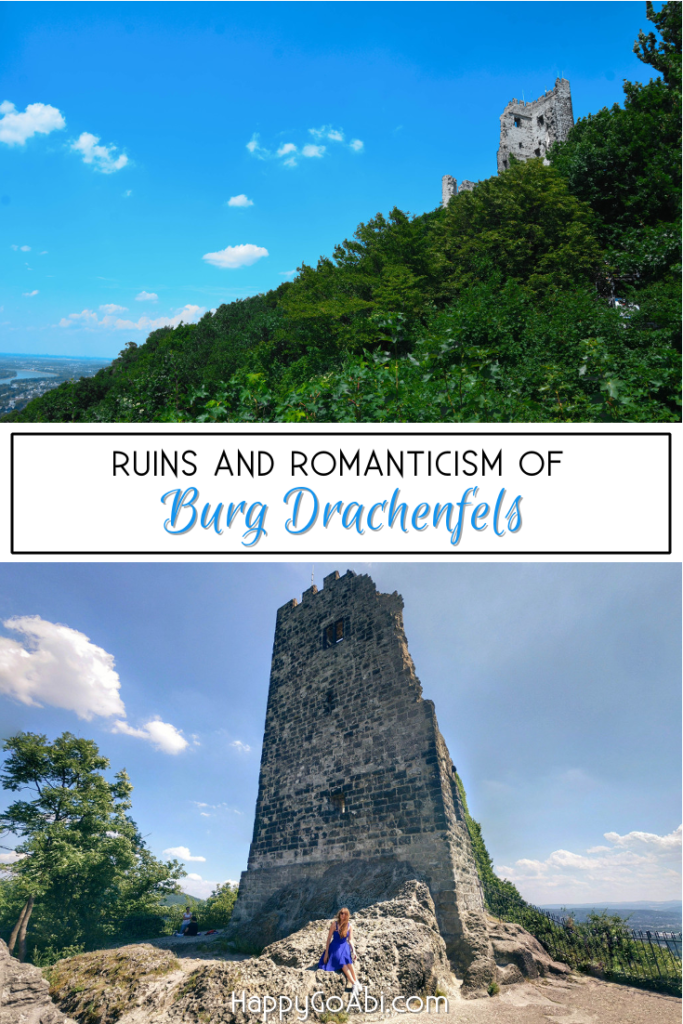Just a short drive away from the cities of Bonn and Cologne sits an old ruined castle on a hill above the Rhine. With the multitude of intact castles across Germany and Europe, this castle—Burg Drachenfels—may not seem like much of an attraction with its lone tower still standing. Yet with its legion of legends and stories as well as the lush greens and blues of the woods and waters, Drachenfels secured its place as a point of interest from as far back as the 1800s in the Romantic era of literature and poetry.
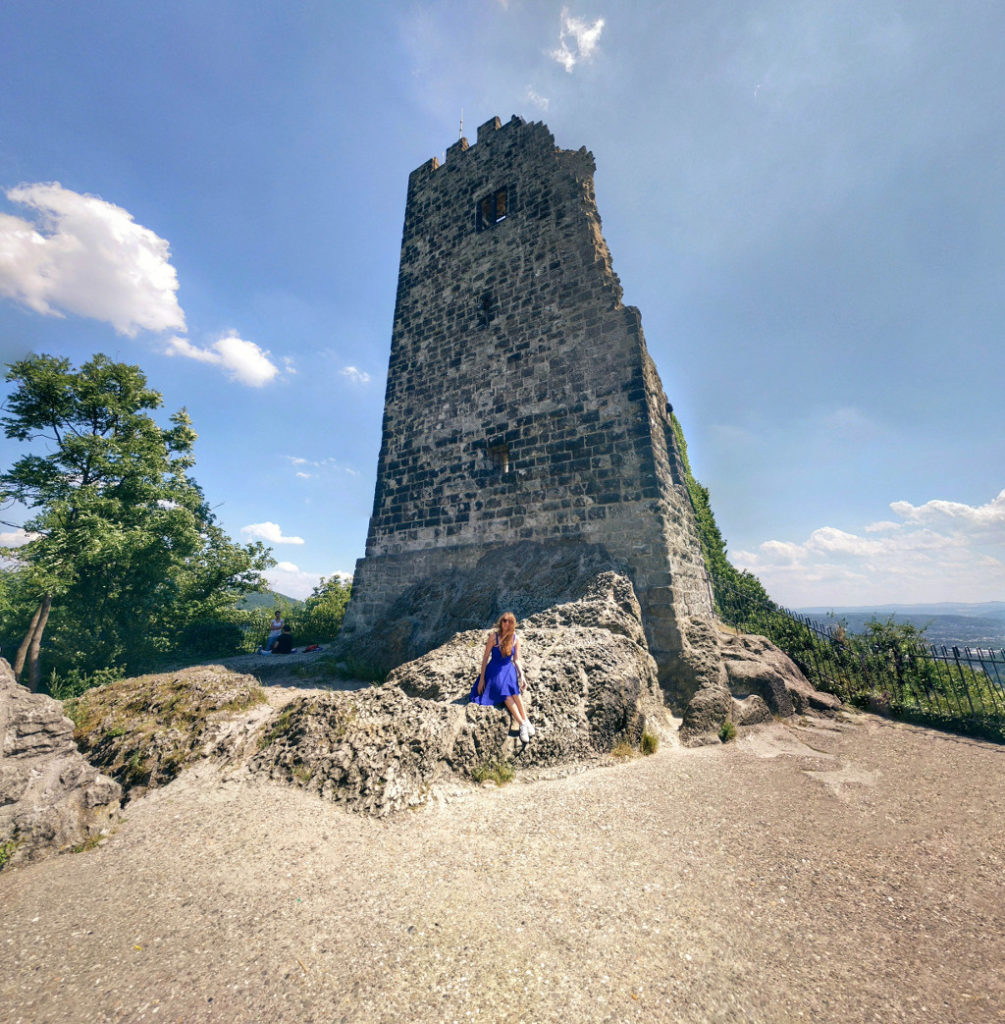 Archbishop Arnold I of Cologne ordered the building of Burg Drachenfels in the 12th century as a stronghold to protect the Cologne region. Interestingly, the quarry on this site also delivered the building materials for the famous Cologne Cathedral. Because of the castle’s lack of usefulness during war in the 1600s, the building came into its ruined state through lack of upkeep as well as erosion of the ground from continuous quarrying on the site. Perhaps because of Drachenfels origins in volcanic activity and its volcanic rock, dragons have been associated with this site throughout the years. Perhaps the most famous of these legends claims that the dragon Fafnir lived in a cave on this hill and that the great hero Siegfried successfully killed it and bathed in its blood to become invulnerable to bodily harm (the same Siegfried of Wagner’s famous opera cycle, Der Ring des Nibelungen). Regardless of whether dragons did indeed live here at some point, the name of the hill and the castle, “Drachenfels,” means “Dragon’s Rock,” and clearly refers to either this legend of Siegfried or to any number of the other dragon-related legends from this region.
Archbishop Arnold I of Cologne ordered the building of Burg Drachenfels in the 12th century as a stronghold to protect the Cologne region. Interestingly, the quarry on this site also delivered the building materials for the famous Cologne Cathedral. Because of the castle’s lack of usefulness during war in the 1600s, the building came into its ruined state through lack of upkeep as well as erosion of the ground from continuous quarrying on the site. Perhaps because of Drachenfels origins in volcanic activity and its volcanic rock, dragons have been associated with this site throughout the years. Perhaps the most famous of these legends claims that the dragon Fafnir lived in a cave on this hill and that the great hero Siegfried successfully killed it and bathed in its blood to become invulnerable to bodily harm (the same Siegfried of Wagner’s famous opera cycle, Der Ring des Nibelungen). Regardless of whether dragons did indeed live here at some point, the name of the hill and the castle, “Drachenfels,” means “Dragon’s Rock,” and clearly refers to either this legend of Siegfried or to any number of the other dragon-related legends from this region.
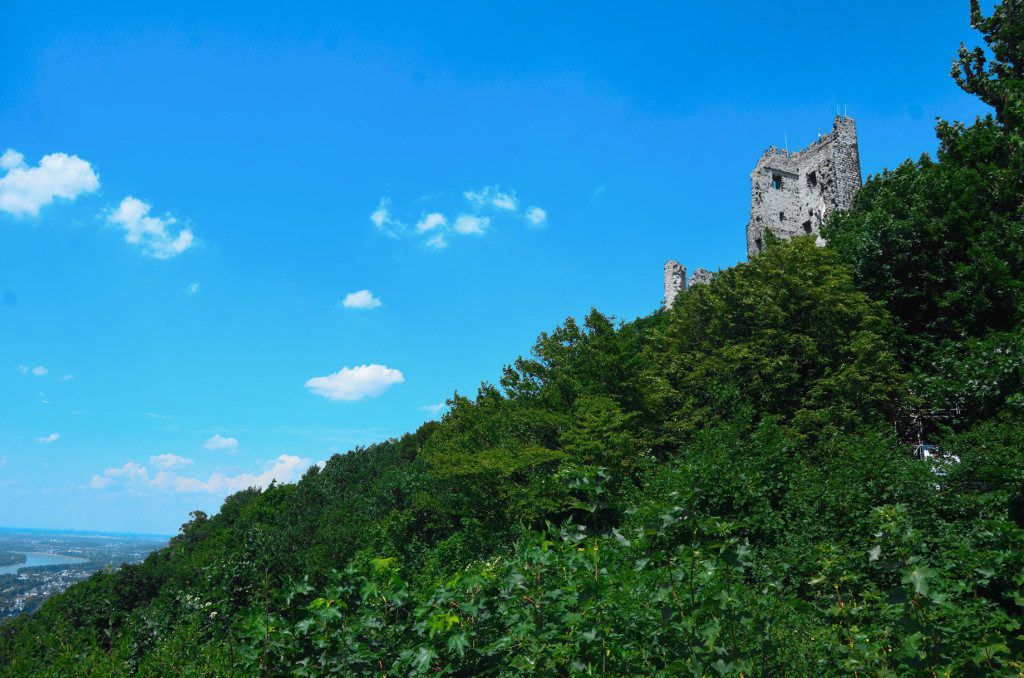 You can reach the remains of Burg Drachenfels on foot through an easy 30-45 minute hike, or by train if hiking is not on your agenda for the day. Hiking means there is no fee to enter or reach the site, while the train requires a fee to ride, but the main reason I recommend hiking is to view the remaining ruined tower as it overlooks the Rhine. This stunning viewpoint is worth the time and energy required to see it, and brings to mind the words of the Romantic poet who initiated the international craze for visiting Drachenfels. In his poem in Childe Harold’s Pilgrimage, Lord Byron writes:
You can reach the remains of Burg Drachenfels on foot through an easy 30-45 minute hike, or by train if hiking is not on your agenda for the day. Hiking means there is no fee to enter or reach the site, while the train requires a fee to ride, but the main reason I recommend hiking is to view the remaining ruined tower as it overlooks the Rhine. This stunning viewpoint is worth the time and energy required to see it, and brings to mind the words of the Romantic poet who initiated the international craze for visiting Drachenfels. In his poem in Childe Harold’s Pilgrimage, Lord Byron writes:
The castled crag of Drachenfels
Frowns o’er the wide and winding Rhine,
Whose breast of waters broadly swells
Between the banks which bear the vine,
And hills all rich with blossom’d trees,
And fields which promise corn and wine,
And scatter’d cities crowning these,
Whose far white walls along them shine,
Have strew’d a scene, which I should see
With double joy wert thou with me.
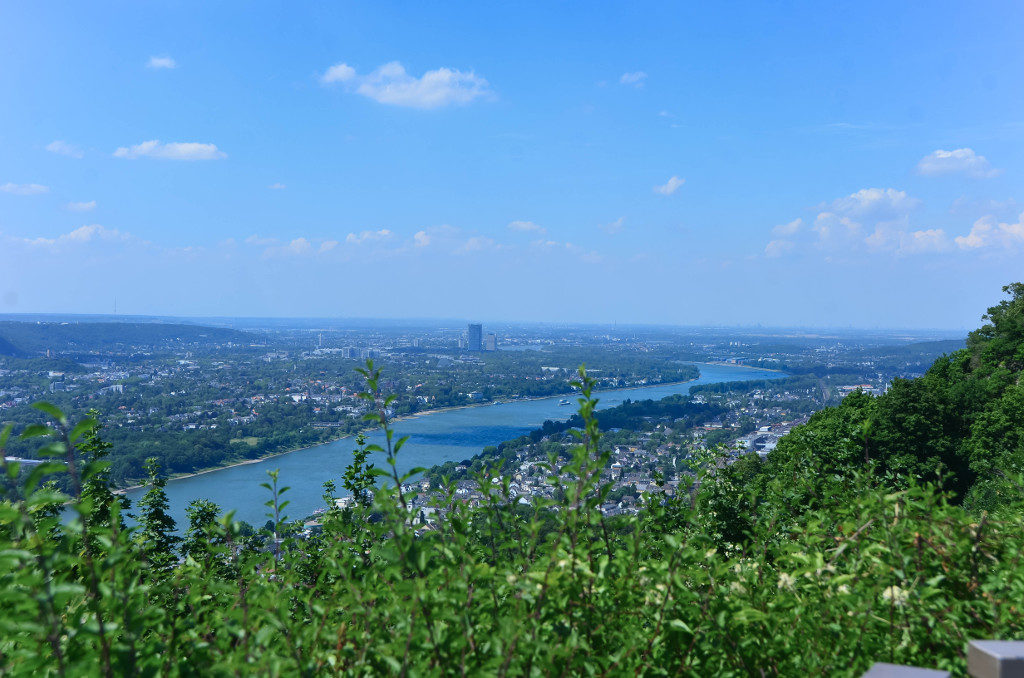 Other poets and artists soon followed Lord Byron’s lead in visiting this incredible place, including the painter Joseph Mallard William Turner and a local poet Heinrich Heine. Collectively, the artists and poets who visited and recorded their experiences popularized this place into the tourist destination it still is today. Although this castle is not intact like many throughout Germany are, its historical and literary value and the remarkably lush scenery makes it a worthy stop on any journey through the region. Additionally, several small restaurants line the hiking path and there is even one at the top of the hill where you can pause for refreshment and enjoy the beauty of the surrounding space.
Other poets and artists soon followed Lord Byron’s lead in visiting this incredible place, including the painter Joseph Mallard William Turner and a local poet Heinrich Heine. Collectively, the artists and poets who visited and recorded their experiences popularized this place into the tourist destination it still is today. Although this castle is not intact like many throughout Germany are, its historical and literary value and the remarkably lush scenery makes it a worthy stop on any journey through the region. Additionally, several small restaurants line the hiking path and there is even one at the top of the hill where you can pause for refreshment and enjoy the beauty of the surrounding space.
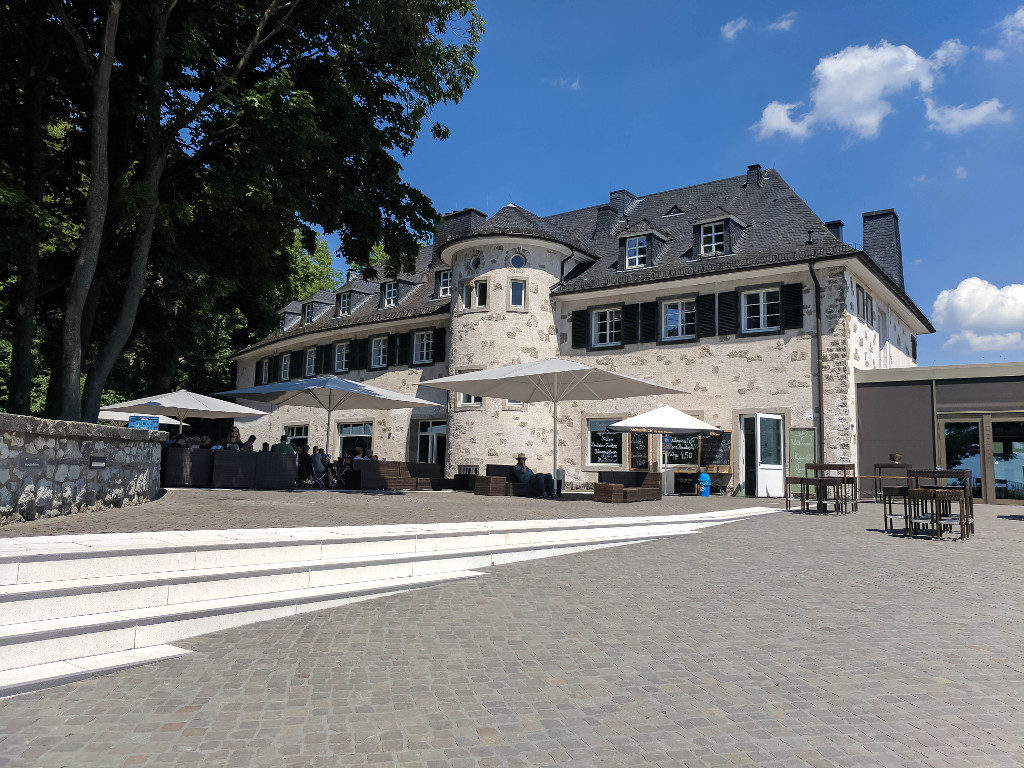 Whether you are simply looking for a day-outing from Bonn or Cologne, or are fascinated by Romantic poetry or art and are following in the footsteps of the greats, a visit to Drachenfels will not disappoint. If you have extra time on your trip, consider adding the neogothic Schloss Drachenburg as a second stop of the day. Schloss Drachenburg is still intact today and sits slightly lower on the mountain, and with its 19th-century construction has more of a typical “fairytale” castle appearance than the ruins of the burg. However, in spite of the beauty of more complete castles, Burg Drachenfels still reigns supreme in its position on the top of the mountain, frowning over the Rhine and all the verdant trees and vines, with its centuries of history and beauty backing its lone, proud tower.
Whether you are simply looking for a day-outing from Bonn or Cologne, or are fascinated by Romantic poetry or art and are following in the footsteps of the greats, a visit to Drachenfels will not disappoint. If you have extra time on your trip, consider adding the neogothic Schloss Drachenburg as a second stop of the day. Schloss Drachenburg is still intact today and sits slightly lower on the mountain, and with its 19th-century construction has more of a typical “fairytale” castle appearance than the ruins of the burg. However, in spite of the beauty of more complete castles, Burg Drachenfels still reigns supreme in its position on the top of the mountain, frowning over the Rhine and all the verdant trees and vines, with its centuries of history and beauty backing its lone, proud tower.

